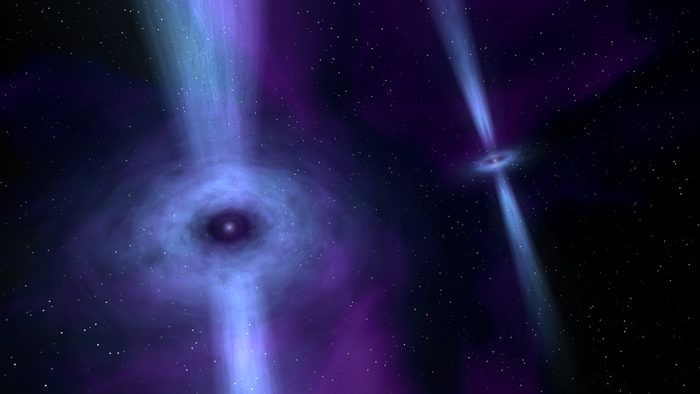Einstein’s greatest theory challenged by 16 year-long experiment in depths of space
Two pulsars orbiting each other make ‘the most precise laboratory’ that scientists have ever seen to test the theory of general relativity

Einstein’s theory of general relativity has been challenged by a team of researchers having conducted a 16 year-long experiment.
The theory, which Albert Einstein published in 1915, is the cornerstone of what scientists know about gravity: that huge objects, and small ones, warp the fabric of four-dimensional space-time.
Unfortunately, while general relativity can explain the motions of the cosmos, it cannot be used to explain actions at the smallest scales of our universe. Those behaviours are studied under quantum physics, and a future theory that may unify the two could help us understand our place in the universe.
“As spectacularly successful as Einstein’s theory of general relativity has proven to be, we know that is not the final word in gravitational theory” said Dr Robert Ferdman, a physicist from the University of East Anglia.
“More than 100 years later, scientists around the world continue their efforts to find flaws in his theory.
In this new study, published in Physical Review X , researchers observed the motion of two huge pulsars – a type of neutron star that emits beams of electromagnetic radiation from its poles – through seven radio telescopes around the world.
These pulsars weigh more than our Sun but are only 15 miles wide. One pulsar rotates 44 times per second, while the other takes 2.8 seconds to turn. The two celestial bodies orbit each other every 147 minutes, at an astonishing speed of 1 million km/h, and it is this motion that makes them worthy of observation.
While the double pulsar, originally discovered in 2003, was unimaginable to Einstein or other physicists of his time, it is “the most precise laboratory” scientists have available to test his theories, Dr Ferdman said.
Scientists were able to test how energy is carried by gravitational waves at a scale 1000 times better than current technology. Not only did the researchers find that Einstein’s theory held up, but they were able to see effects that had never been studied before.
“Apart from gravitational waves and light propagation, our precision allows us also to measure the effect of “time dilation” that makes clocks run slower in gravitational fields.” Professor Dick Manchester from Australia’s national science agency, CSIRO, said.
“We even need to take Einstein’s famous equation E = mc2 into account when considering the effect of the electromagnetic radiation emitted by the fast-spinning pulsar on the orbital motion.
“This radiation corresponds to a mass loss of eight million tonnes per second! While this seems a lot, it is only a tiny fraction - three parts in a thousand billion billion(!) - of the mass of the pulsar per second.”
The scientists said that, while the level of precision they were able to measure in was unprecedented, future experiments with larger telescopes will examine the universe with an even greater level of accuracy and – one day – could find a deviation from Einstein’s theory.
Join our commenting forum
Join thought-provoking conversations, follow other Independent readers and see their replies
Comments